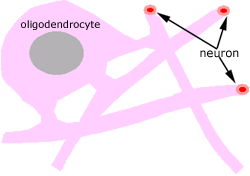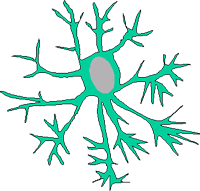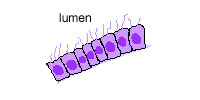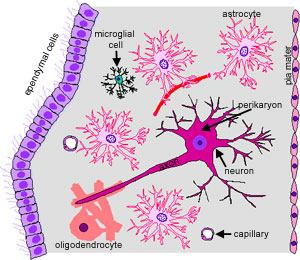Supporting cells in the central nervous system.

In the central nervous system, there are four types of supporting cells.
1. Oligodendrocytes.
The axons of many neurons are insulated by a
myelin sheath, which increases the rate at which an
axon can conduct an action potential.
In multiple sclerosis, the myelin sheaths in the CNS are destroyed,
and action potentials are slowed.
Myelin is formed by oligodendrocytes in the CNS, (and by
Schwann cells. in the PNS). Oligodendrocytes
myelinate several axons from different nerves (up to around 50).

2. Microglia
These types of cell are less common. They have a role in immune
defence and become phagocytic in response to infections or tissue damage.

3. Astrocyte
These cells are the most common type of supporting cell. They are
involved in metabolic exchange between neurons and blood.

4. Ependymal cells. These cells line
the vetricles and spinal canal.
They have cilia on their luminal surface.
Peripheral nervous system

In the peripheral nervous system, there is one type
of supporting cell, the Schwann cell.
Find out more about Schwann
cells and the peripheral nervous system.






